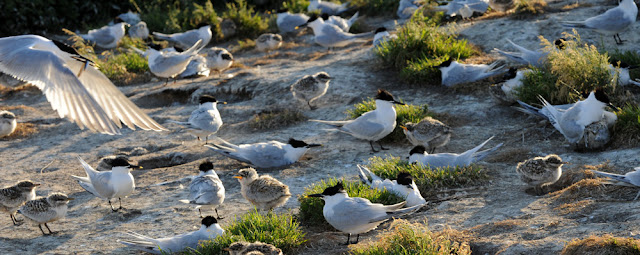Leopard magazine have published an article in their August issue based on pieces lifted from the Eagle Days book. This is a general interest, and the best-selling magazine in north east Scotland. So it is good that some of what I have described in the book will now reach people who do not usually read wildlife books or magazines.
Saturday, 28 July 2012
New photographs uploaded to the website
I have uploaded three new albums to my photographic portfolio on my website; Scottish Wildlife 2012, Sutherland 2012 and Norway 2012. Just a small selection from the hundreds which I took when in Scotland and Norway recently.
Lichens on a gravestone, Braemar, Scotland
I have uploaded three new albums to my photographic portfolio on my website; Scottish Wildlife 2012, Sutherland 2012 and Norway 2012. Just a small selection from the hundreds which I took when in Scotland and Norway recently.
Sandwich Tern
Saturday, 30 June 2012
Willow Grouse
Male willow grouse
While in Norway I saw several willow grouse, always close to willow or birch scrub where they were feeding on the opening leaf buds and catkins. The male, above, has a redder colouring to his head and neck, and much more white on his body and wing feathers. Both sexes moult into almost pure white plumage in the winter, then back into a rusty brown feather colour in spring, the female doing so more quickly than the male as she has to be concealed on the nest and white feathers would betray her camouflage.
Female willow grouse
The females were incubating eggs while we were there in late June, and they only come off to feed perhaps once a day. This bird, above, was feeding on the opening leaf buds of herbs and moss capsules. One nest I saw held twelve eggs, another held nine. These are both quite large clutches, typical of the species when their population is on a rise which these seemed to be as few birds have been seen in recent years.
Female on nest
The females incubate for more than three weeks, lying still and quiet under the cover of as in this case, dwarf birch, Betula nana. And they do so in all weather, such as rain when I took the photographs. The rain beading on her head and bill, and her breast feathers were matting with water. But underneath she would have been warm and dry, her plumage shedding the water as long as she was undisturbed -which she was when I left her.
Nordic Waders
Wood sandpiper
I am just returned from northern Norway where I was helping my brother, Skitts, with his long-term study of breeding waders. However, as in Scotland this spring, there have been almost incessant northerly winds there. This has led to a late thaw and emergence of plants and insects, and very few birds were breeding compared with the amount in years of more usual weather.
Wood sandpiper, which was caught and ringed
In one mire where there would normally have been twenty-forty pairs of wood sandpipers breeding there was only one pair with chicks. In some mires there were none. And it was similar story with spotted redshank and reeve. Red-necked phalaropes were particularly scarce, probably because they are surface feeders and as there were very few mosquitoes emerging they had no food supply.
Ringing a wood sandpiper chick.
Of the two main study species, jack snipe did not seem to be breeding at all, although several birds were seen displaying. And less than a quarter of the expected number of broad-billed sandpiper were breeding.
Adult, (1st year) broad-billed sandpiper caught and colour-ringed for identification in the field in subsequent years of study.
Unfortunately, a high proportion of clutches from the few that were laid were eaten by predators. This was probably mostly by hooded crows which were walking over the mies, in large flocks of twenty or more birds, feeding on emerging cranefly. They would have welcomed any eggs they came across in the process. We also saw several red foxes roaming the area, and they would have been likely predators too.
Sunday, 17 June 2012
Sandwich Terns
I was out ringing sandwich terns last week, as well as reading rings in the field. This was all part of a study organised by Grampian Ringing Group, and focused on the tern colony at the Sands of Forvie nature reserve at Newburgh in Scotland.
One of the birds we read the colour ring number on, had been sighted in Namibia in February, and several others were birds reared at the colony over the past twelve years.
Many birds were flying in with fish, so I tried to capture as many of these as possible, to identify what prey they were feeding on. This could prove useful in future if the fish stocks change and effect the birds' breeding performance.
And as the evening light was so good I took some illustrative shots of the birds.
The whole experience was wonderful, such a busy, noisy, spectacle.
I was out ringing sandwich terns last week, as well as reading rings in the field. This was all part of a study organised by Grampian Ringing Group, and focused on the tern colony at the Sands of Forvie nature reserve at Newburgh in Scotland.
One of the birds we read the colour ring number on, had been sighted in Namibia in February, and several others were birds reared at the colony over the past twelve years.
Many birds were flying in with fish, so I tried to capture as many of these as possible, to identify what prey they were feeding on. This could prove useful in future if the fish stocks change and effect the birds' breeding performance.
And as the evening light was so good I took some illustrative shots of the birds.
The whole experience was wonderful, such a busy, noisy, spectacle.
Subscribe to:
Comments (Atom)

















